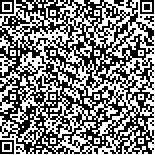| |
|
|
| 本文已被:浏览 1729次 下载 491次 |

码上扫一扫! |
|
|
| 台风灾害下城市受损树木的空间分布特征——以广州为例 |
|
肖毅强1, 古亚宁1, 林瀚坤2, 黄颂谊1
|
|
1.华南理工大学;2.广东工业大学
|
|
| 摘要: |
| 台风作为一种极端的气候灾害,常年袭击中国东南沿海城市,给园林树木造成严重破坏,并引发一系列次生灾害。以台风灾害下广州2016—2018年受损树木数据为基础,利用地理信息系统(GIS)技术与城市气候地图(LCZ),对受损树木分布进行基于城市空间特征的分类统计,进而结合树木的受损情况,进行树种、受损原因等问题的分析与讨论。研究结果表明:1)羊蹄甲属、榕树和绿黄葛树等为台风灾害下的易倒伏、易断枝树种;2)受损树木主要分布于建筑密度为30%~50%、容积率在1~4的地区,其LCZ类型多为密集的中层建筑区(LCZ 2);3)台风灾害下受损树木分布主要集中于4种城市空间,即低层多层高密度区、密集-开敞区、高层建筑峡口区、高架桥周边城市空间。希望为台风灾害下的园林树木养护与检测和景观设计提供参考,从而减弱次生灾害对城市的影响。 |
| 关键词: 风景园林 台风灾害 园林树木 城市空间 地理信息系统 城市气候地图 |
| DOI:10.14085/j.fjyl.2020.10.0112.06 |
| 分类号:TU986 |
| 基金项目:国家自然科学基金(编号 B51478188,51908220) |
|
| Spatial Distribution Characteristics of Damaged Trees in Cities in Typhoon Disaster: A Case Study of Guangzhou |
|
XIAO Yiqiang1, GU Yaning1, LIN Hankun2, HUANG Songyi1
|
|
1.South China University of Technology;2.Guangdong University of Technology
|
| Abstract: |
| Typhoon, an extreme climate disaster, attacks southeast coastal cities of China all year round, causing serious damages to landscape trees and incurring a series of secondary disasters. Based on the data of damaged landscape trees in Guangzhou from 2016 to 2018 under typhoon disasters, this research uses the Geographic Information System (GIS) technology and Local Climate Zone (LCZ) to carry out classified statistics on the spatial distribution of damaged landscape trees based on the urban space. Taking into account the damages of trees, it carries out the discussion and analysis of tree species, damage reasons and other issues. The results show that: 1) Bauhinia spp., Ficus microcarpa and Ficus virens are high-risk tree species in typhoon disasters. 2) The damaged trees are mainly located in areas with a building density of 30%~50% and a floor area ratio of 1~4, and most of the LCZ types are compact mid-rise buildings (LCZ 2). 3) In typhoon disasters, the damaged landscape trees are mainly distributed in four types of urban morphological space, namely the low-rise mid-rise high-density area, dense-open area, high-rise building fjord area and urban space around viaduct. This research provides reference for landscape trees maintenance and detection and landscape design in typhoon disasters, so as to reduce the impact of secondary disasters on cities. |
| Key words: landscape architecture typhoon disaster landscape trees urban space Geographic Information System (GIS) Local Climate Zone (LCZ) |
| 引用本文: | 肖毅强,古亚宁,林瀚坤,黄颂谊.台风灾害下城市受损树木的空间分布特征——以广州为例[J].风景园林,2020,27(10):112-117. |
| XIAO Yiqiang,GU Yaning,LIN Hankun,HUANG Songyi.Spatial Distribution Characteristics of Damaged Trees in Cities in Typhoon Disaster: A Case Study of Guangzhou[J].Landscape Architecture Journal, 2020, 27(10):112-117. |
|